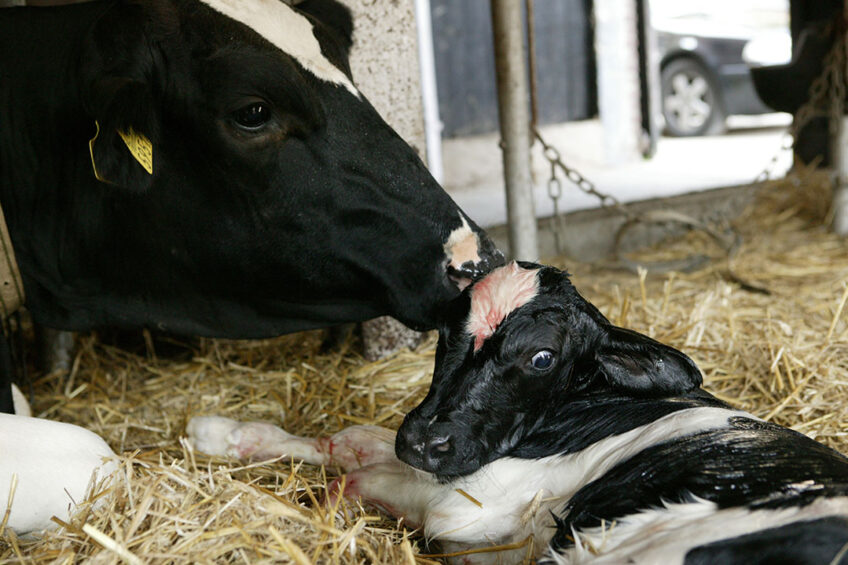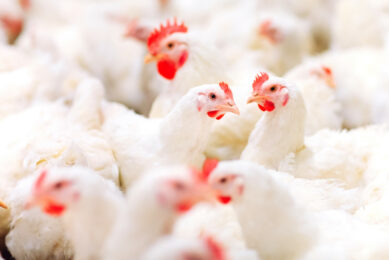Omega fatty acids for better dairy cows

The aspects of omega fatty acids and the reproduction and immunity in dairy cows are quite well-known by nutritionists and do not constitute major concerns for them. On the contrary, lipids are nowadays not only perceived as providers of energy, but also functional components of diets with physiological and economic implications.
Due to this, nutritionists have started to consider formulating for specific fatty acids and their ratios (similar to amino acids), as they have important implications in many aspects such as the overall digestibility of the diet, rumen health and feed efficiency, and others of increasing interest such as immunity and reproductive performance. There are, however, still no recommendations for fatty acids in dairy. On the one hand, palmitic acid has been proposed as an interesting tool to increase milk fat percentage, and a lot of research has been carried out during the last few years. On the other hand, unsaturated fatty acids are also in the spotlight, as improvers of milk fat composition (in the search for human health) and fertility rates. Also, their effects on immunity modulation is considered (although this point is nowadays more on the academic side). Here we provide a summary of the research in this field.

Effects on reproduction, immunity
Traditionally, the effects of lipids on reproduction was approached based on the energy provided by them (energy balance and body score). Authors have, however, demonstrated that fatty acids also play a role in physiological/metabolic pathways. In this sense, Mattos et al. (2000) suggested that the positive effect of fat on fertility may not be due to improvement in the energy balance of the cows, but rather due to the specific effect of some dietary fatty acids on the physiology of the hypothalamus-hypophysis-ovary axis and even the uterus. According to Dirandeh et al. (2012), studies have generally indicated that the PUFA of the omega-6 (linoleic acid) and omega-3 (a-linolenic acid; eicosapentaenoic [EPA], C20:5 omega-3; docosahexaenoic [DHA], C22:6 omega-3) families are the most beneficial to improve reproduction in cows. N-3 families have generally shown to have an important effect on reproductive performance, which is due to the effect of omega in the reduction of PGF2α concentrations. Because of the known luteolytic properties of PGF2α, a reduction in endometrial PGF2α secretion would favour the establishment and maintenance of pregnancy (Hallé et al., 2015). Feeding supplements high in omega-3 (n-3) FA (e.g. linolenic acid, C18:3n-3) during the breeding season and early gestation has thus been reported to reduce uterine PGF2a production and improve embryo quality and pregnancy maintenance. Pregnancy rates may be increased by enhanced progesterone production and decreased embryo mortality (Santos et al., 2008; Silvestre et al., 2011; Hess et al., 2005).
Omega-6/omega-3 ratio
Many nutritionists shifted their approach to a fatty-acids focused one, which established a sense of worry regarding the n-6/n-3 ratio. In this sense, it is noteworthy to consider the values used by Kim et al. (2015): n-6/n-3 FA ratios of 2,07, 5,18 and 7,37. These authors assessed the effects of dietary n-6/n-3 fatty acid ratio on nutrient digestibility, blood metabolites and FA profile of Hanwoo heifers. In terms of digestibility and effects on rumen, they found that in vivo digestibility was not affected (P > 0,05) by the dietary n-6/n-3 FA ratio, while in vitro dry matter digestibility and concentrations of total volatile fatty acids and propionate decreased linearly with increasing n-6/n-3 FA ratio. Regarding blood metabolites, they found that plasma insulin and progesterone increased linearly, but linolenic acid and total n-3 FA decreased linearly with increasing n-6/n-3 ratio. The authors thus concluded that increasing the dietary n-6/n-3 FA ratio can increase the n-6/n-3 FA ratio in plasma and ruminal fluid as well as plasma progesterone secretion, which is related to fertility. Hallé et al. (2015) also studied the effects of different n-6:n-3 ratios (4, 15 and 25), this time on gene expression and PG secretion in bovine different endometrial cells at the time of peri-implantation. The ratio 4 in combination with lignan enterolactone (ENL) resulted in the greatest reduction in PGF2α concentrations. Due to the known luteolytic properties of PGF2α, a reduction in endometrial PGF2α secretion would favour the establishment and maintenance of pregnancy.
The same year, Greco et al. (2015) evaluated the effects of altering the ratio between n-6 and n-3 fatty acids (FA) in the diet and the intake of these FA over 6-10 days in milk lactating dairy cows on lactation performance and inflammatory acute phase responses to a challenge with lipopolysaccharide (LPS). Diets were supplemented with a mixture of Ca salts of fish, safflower, and palm oils to create three different ratios of n-6 to n-3 FA (3:9, 4:9, or 5:9).
Feed intake, milk and immunity
The results included several components. Reducing the ratio of n-6 to n-3 FA increased dry matter intake (24.7, 24.6, and 26.1 [for 5:9, 4:9, and 3:9, respectively]), with concurrent increases in milk production results. The three different ratios of n-6 to n-3 FA resulted in 43.4, 45.4, and 48kg of 3.5% fat-corrected milk per day with 1.53, 1.60, and 1.71kg fat/d, 1.24, 1.28, and 1.32kg true protein/d and 2.12, 2.19, and 2.29kg milk lactose/d (respectively for the ratios 5:9, 4:9, and 3:9). Regarding immunity, it was shown that the concentrations of IL-6 in plasma increased as the ratio of n-6 to n-3 FA increased (112.5, 353.4, and 365.1pg/ml [for 3:9, 4:9, and 5:9, respectively]).
Haptoglobin concentration was greatest at 24h after LPS challenge for cows fed 5,9. Body temperature and somatic cell count were greater for cows fed 4:9 compared with those fed 3:9 or 5:9 (41.3, 40.8 and 40.8; 4.33, 3.68 and 3.58 × 106/ml), for R5, R4 and R6, respectively. Phagocytosis and oxidative burst by neutrophils collected from circulation were unaffected by dietary treatment in the first 48h after intramammary LPS infusion. These authors (Greco et al., 2015) therefore concluded that supplying the same quantity of fatty acids in the diet of early lactation dairy cows but altering the ratio of the polyunsaturated FA of the n-6 to n-3 families, influenced lactation performance and inflammatory responses to an LPS challenge.
Conclusions and recommendations
It remains clear that nutrition has a transcendental effect on reproduction and immunity, in particular essential fatty acids (omega-3 and omega-6). Consequently, the approaches in which the functional effect of each fatty acid is already considered at the field level are more novel, and the perception is that they are far from being mere contributors of energy (although they are). Of course, the supply of such fatty acids must be carried out at appropriate doses and ratios, as well as at the right time periods (before/after parturition). In order to be precise, the fatty acids protection level must be measured and ensured, due to ruminal biohydrogenation. The development of protected omega-3 and omega-6 sources at the ruminal level are therefore necessary to avoid reductions in food efficiency at the ruminal level and fat loss in milk.
This article has been reprinted with permission from AFMA Matrix (volume 27, issue 3, 2018).
Join 13,000+ subscribers
Subscribe to our newsletter to stay updated about all the need-to-know content in the dairy sector, two times a week.










